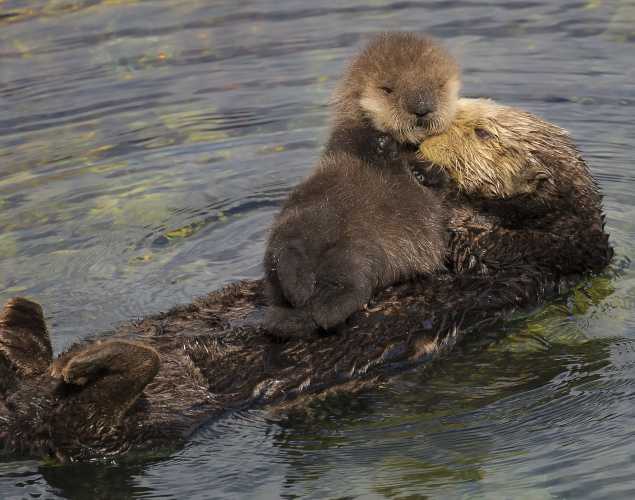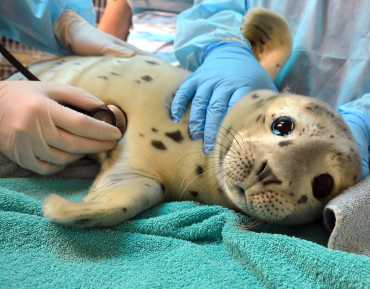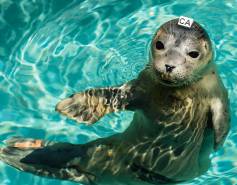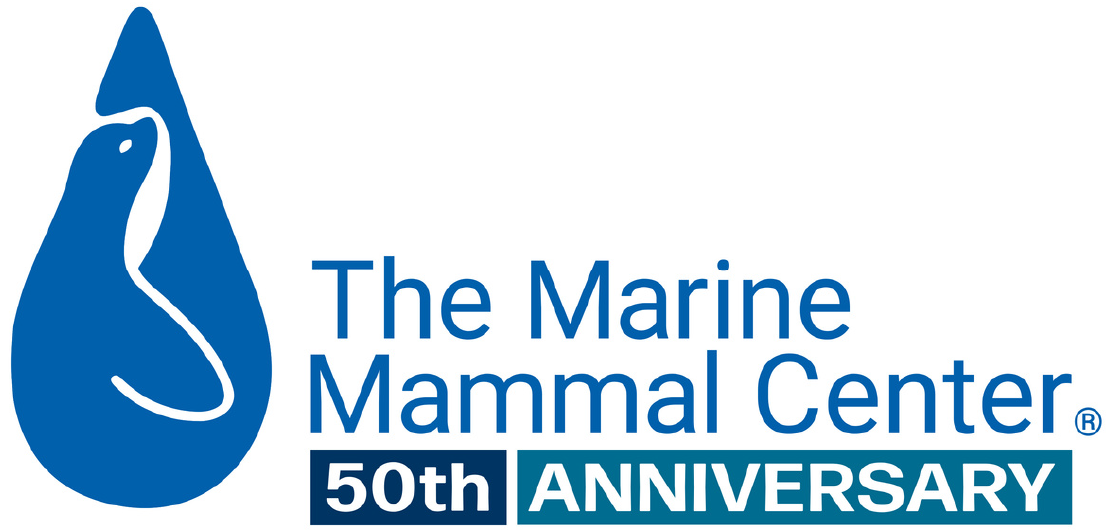
Experts Successfully Reunite Sea Otter Pup with its Mother
- Species conservation
The Marine Mammal Center successfully reunites southern sea otter pup with its mother in Morro Bay with help from partners at California Department of Fish and Wildlife
The Marine Mammal Center and its partners at California Department of Fish and Wildlife (CDFW) successfully reunited a dependent southern sea otter pup with its mother Monday in Morro Bay. The rescue and reunification effort highlights the importance of collaboration and the Center’s commitment to the continued recovery efforts for this sentinel species.
“Southern sea otters are a threatened species, and the opportunity to release these females back to the wild is a big boost to the future health of this population and surrounding ecosystems,” says Dr. Shawn Johnson, Director of Veterinary Science at The Marine Mammal Center. “We are so grateful to our wonderful partners in Morro Bay for their quick assistance in making this rescue and reunification possible.”
A member of the public first reported seeing a separated sea otter pup earlier in the day Monday and called the Center’s rescue hotline to report the animal. Trained rescuers from the Center, along with CDFW scientist Mike Harris, rescued the pup and boarded a Morro Bay Harbor Patrol boat in search of a response from otters in the area.
The team of experts arrived at a known resting area for otters and played pre-recorded vocals of the pup over a Bluetooth speaker to try to catch the attention of its mom, in an attempt to see if she was in the area. Luckily, a female otter responded to the pup's vocals and Harris safely tossed the buoyant baby otter to its mother to prevent mom from being frightened away by boat noise.
“The positive outcome of the reunion was made possible by good cooperation between our organizations,” said CDFW Senior Environmental Scientist Mike Harris. “A quick response, boat support and experience with sea otters all played a role in giving this newborn female pup a chance to survive in the wild.”
The mother initially displayed skittish behavior, but then quickly cradled the pup and swam back to a group of otters. While tossing the baby otter might seem surprising at first, it’s actually the safest way to get the otter back to the mom without scaring the mom away. Sea otter pups are incredibly buoyant so won’t sink using this method.
This reunification comes shortly after the Center and its partners at the Monterey Bay Aquarium released two southern sea otters back to the wild in Monterey Bay. Both female otters, Langly and Sprout, spent months in rehabilitative care at the Center and were implanted with advanced tracking devices to help better understand and protect this sentinel species. The Center’s experts have been tracking the two otters since their release last Tuesday and note that both animals are displaying swim patterns consistent with foraging.
Since 1995, the Center has responded to more than 350 stranded sea otters and has rehabilitated 23 sea otters. As many as 20,000 southern sea otters may have lived along the coasts of California and Baja California at one time, but that is no longer the case. For the last 40 years, southern sea otters have been listed as threatened under the federal Endangered Species Act with the population estimated at just a few thousand. The current southern sea otter’s range extends from south of Half Moon Bay in the north to southeast of Point Conception in the south—only a small part of their historical range.
For more information or to set up an interview on this topic, please contact us at media@tmmc.org.
Yes, I want to save a life!

Yes, I want to save a life!
You’ll be giving sick and injured animals the best possible care at the Center’s state-of-the-art hospital. With your gift today, you are giving a patient a second chance at life in the wild.
See Our Latest News
{"image":"\/Animals\/Patients\/Harbor seals\/2020\/cropped-images\/hs-barnwood-by-bill-hunnewell-c-the-marine-mammal-center-315-0-3299-2577-1607370547.jpg","alt":"harbor seal Barnwood","title":"Last-Minute Gift Guide \u2013 Top Gifts that Give Back to Marine Animals","link_url":"https:\/\/www.marinemammalcenter.org\/news\/last-minute-gift-guide","label":"News Update","date":"2025-12-18 01:00:00"}

Last-Minute Gift Guide – Top Gifts that Give Back to Marine Animals
December 18, 2025
Read More{"image":"\/Animals\/Patients\/Hawaiian monk seals\/2025\/cropped-images\/b-ru72admission-to-ke-kai-ola112125photo-c-the-marine-mammal-center-noaa-permit-24359-0-364-1270-992-1766095407.jpg","alt":"A newborn Hawaiian monk seal pup with a black coat in rehabilitative care.","title":"Newborn Hawaiian Monk Seal Pup Now Receiving Care","link_url":"https:\/\/www.marinemammalcenter.org\/news\/newborn-hawaiian-monk-seal-pup-now-receiving-care","label":"Patient Update","date":"2025-12-18 01:00:00"}

{"image":"\/Animals\/Patients\/Hawaiian monk seals\/2025\/cropped-images\/d-ru28release-exam-at-ke-kai-ola111025photo-by-giancarlo-rulli-c-the-marine-mammal-center-noaa-permit-24359-0-0-1270-992-1764620886.jpg","alt":"","title":"Bird Flu Vaccine Trial Offers Hope for Protecting Hawaiian Monk Seals","link_url":"https:\/\/www.marinemammalcenter.org\/news\/bird-flu-vaccine-trial-may-offer-hope-for-protecting-hawaiian-monk-seals","label":"News Update","date":"2025-12-01 08:13:00"}

Bird Flu Vaccine Trial Offers Hope for Protecting Hawaiian Monk Seals
December 1, 2025
Read More{"image":"\/Animals\/Patients\/Hawaiian monk seals\/2021\/hms-pp08-by-sheila-latta-c-the-marine-mammal-center-noaa-permit-18786.jpg","alt":"Hawaiian monk seal","title":"The New York Times: Inside the Bird-Flu Vaccine Trial for Monk Seals","link_url":"https:\/\/www.marinemammalcenter.org\/news\/the-new-york-times-inside-the-bird-flu-vaccine-trial-for-monk-seals","label":"In the News","date":"2025-12-01 01:00:00"}

The New York Times: Inside the Bird-Flu Vaccine Trial for Monk Seals
December 1, 2025
Read More